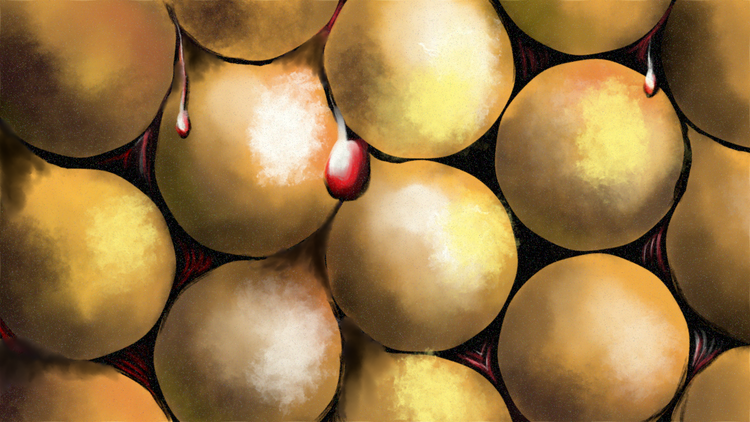
Running Commentary 7/5/2021
Hello,
Today is the Fifth of July, which typically is not a holiday, but because the Fourth of July fell on a Sunday this year, a lot of Americans have today off. So, to my American readers, hopefully, today's newsletter will enrich rather than encroach on your festivities.
Anyway...
Watching...

The Bad Batch
- This episode we see a bit of what happened to the Separatist government after the war. The films indicated that the Separatist leadership was just the business concerns whose officials were killed on Mustafar, but the elected government on Raxus was established in The Clone Wars, and this is the first we've seen of them since, that I can recall. I expect we'll be seeing more on the subject in Andor.
- The Empire still uses Clone Wars-era equipment at this point, and this episode indicates that the IT-O was one of the first pieces of new kit they acquired. Shows their priorities, I suppose. Unless the Republic had those too, somewhere...
- The AT-TE fight was the best action sequence this show's had yet. Exciting and well visualized. This whole episode looked great, actually. It really seems like the show got much better lighting starting a couple of episodes ago, though I'm not sure why that would be.
- Add Alexander Siddig to the List.

Loki
- I'm sorry, but I'm still really confused what was done at the end of episode 2 where Sylvie sent all those timeline pruning charges to... wherever she sent them. I don't think the show has ever followed up on whatever happened there.
- While I've otherwise been able to keep up with this show, I wonder if this show isn't getting too convoluted for some viewers to follow. We've gone from basic time travel with "Variants" that seem basically the same as people in the main timeline, to Sylvie being a markedly different version of Loki from basically the same sort of universe, to now all sorts of different versions of Loki, including one apparently from a timeline wherein presumably people are all crocodiles.
- Owen Wilson returns, welcomely, then is killed off. He's probably out of the show now, but I kind of hope we find a realm full of different Owens Wilson. For Disney cross-brand synergy's sake, I hope one, in the background, is from a timeline where he's a red racecar.
- Speaking of cross-brand synergy, Mobius mentioned vampires in this episode, which led me to wonder if that's set-up for that Marvel vampire movie that's set to come out next year. But I looked into it, and it's apparently a Spider-Man property, and thus is being produced by Sony outside of the MCU, so Mobius probably wasn't foreshadowing that. Furthering my confusion is that the vampire is named Morbius.
- The Timekeepers were, indeed, fake. Sadly, none were portrayed by Kevin Feige, as far as I can tell.

Bird of the Week
This week, in honor of the Independence Day holiday, we have the Bald Eagle. This large, primarily pescatarian bird of prey is found throughout North America, from Alaska and Canada to northern Mexico. They can be found near large bodies of water in every U.S. state besides Hawaii. They nest in trees; indeed, their nests are the largest found in any tree anywhere in the world, one ton of branches woven into a bowl as wide as 8 feet, large enough for a person to sit in. With their dark chocolate plumage and their white heads and tails, bald eagles are unmistakable at sight. In his seminal field guide, ornithologist and illustrator Roger Tory Peterson described the eagle as "all field mark". The African fish eagle, another species in the same genus, is the only bird a mature bald eagle could be mistaken for, but the two's respective ranges do not overlap at all. However, juvenile bald eagles are all-brown and can be easily misidentified, either mistaken for a golden eagle or for some unknown species. Infamously, J.J. Audubon may well have used a juvenile eagle as the model for his "Bird of Washington", a dark, enormous bird featured in his Birds of America. Female eagles are notably larger than males.
The name "bald eagle" uses an older form of "bald", short for "piebald", meaning "two-toned". Their binomial is Haliaeetus leucocephalus, from the Greek for "white-headed sea eagle". In other languages, they are generally something translating to "white-headed eagle" or "American eagle".
The bald eagle is the national bird of the United States of America. Like much of the American founding, this is a classical reference. The Roman Republic used a golden eagle as an emblem, and the bald eagle was seen as the distinctly American equivalent. The bird appears in the U.S.'s official seal, on currency, and in branding for the United States Postal Service. Even many private entities use the bald eagle as a symbol. It has become a mascot not just for the American government, but for the American people. This might be because of Americans' famously hypertrophied sense of aesthetic patriotism, or it might be because eagles are just cool. At least, everyone but Benjamin Franklin thought so. In a letter decrying the establishment of an elitist club which also used the bald eagle as an emblem, Franklin said he thought the eagle was "A Bird of bad moral Character", saying the turkey was more respectable.
Despite their exalted status, bald eagles saw their numbers decline significantly during the 20th Century, due to a combination of habitat loss, hunting, and poisoning by pesticides. Their population in the United States dropped to below 1,000 breeding adults. Today, however, the bald eagle is seen as a major success story of conservation efforts. Killing an eagle is banned in the United States and Canada, with some exceptions made for traditional use by native peoples, who have similarly revered the birds since well before the U.S. founding.
Curation Links
The Business of Blending In | Rae Nudson, Topic
With the advent of accurate, long-range weapons came a real need for soldiers to hide. Flashy, bright uniforms became replaced with camouflage gear, mottled colors were painted on tents and vehicles, and clean faces were painted with...actually with any number of things, some of them quite unpleasant. Nowadays, military face paint is a major market for special effects makeup companies.
The Card Maker Who Brought the Joker Into the World | David Doochin, Atlas Obscura
A standard deck of playing cards numbers 52, 13 unique cards in 4 suits. This is fairly common knowledge, but it's arguably not true. Buy a standard deck of playing cards and you'll most likely get 53, or perhaps even 54 cards, the extras being called "jokers". These renegade cards do not belong to any suit, and function as spoilers in certain games. They originated in Civil War-era games of euchre, and were first sold in new decks by Samuel Hart, whose work as a card-maker still shows in decks today. (Note the bald eagle depicted on Hart's early card design.)
How Viruses Could Cure Cancer and Save Lives | Nathaniel Scharping, Discover Magazine
"When it comes to fighting invaders, the immune system relies on specialized members of its fleet: T cells, which learn to recognize and kill interlopers. But there aren’t always enough T cells nearby to do the job effectively, something that’s hampered the success of immunotherapy drugs. That’s where the viruses come in — they call more T cells to the site of the tumor." For Discover's July/August 2021 issue, Scharping examines how infecting cancerous tissue with specially cultured viruses is being used to encourage the body's immune system to purge tumors.
Out Of Mind | Simon Mulvaney
[VIDEO] A documentary about aphantasia, the inability to conjure images in one's mind's eye, and some of the people who exhibit it. An interesting primer on the subject matter, raising the intriguing question of where to draw the line between disability and mere distinction. (14 minutes)






Member Commentary